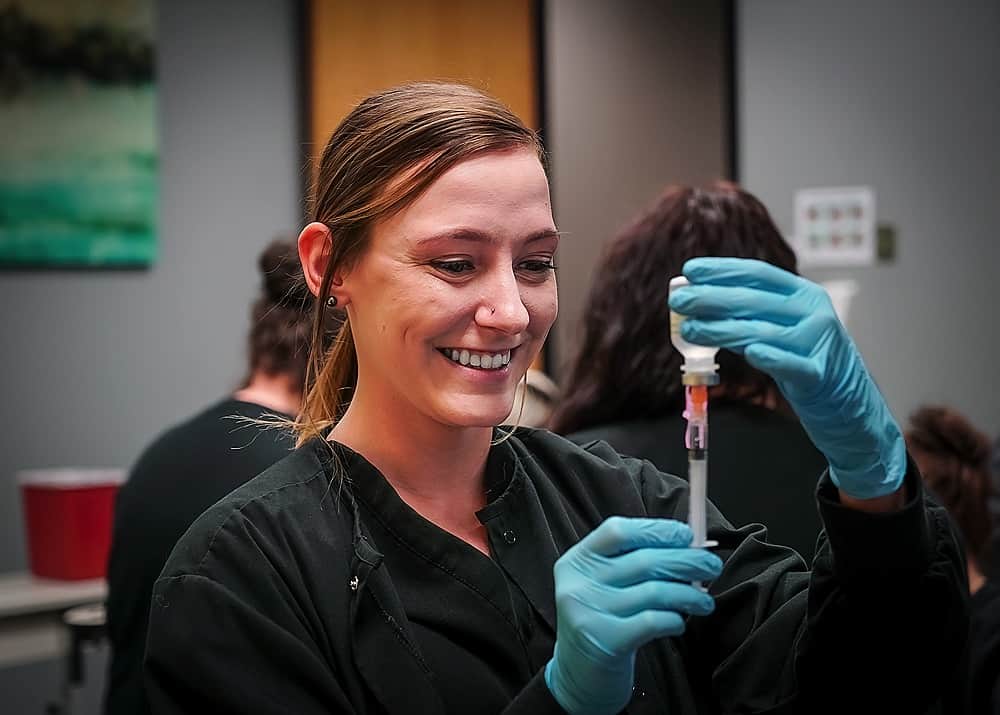Many of you may go in to the doctor for a vaccination or birth control shot, or may even be giving yourself medications such as insulin, and not know the correct technique. Being a nurse myself I am well aware if the person administering my injection is administering correctly, but if I wasn’t I would want to know!

Picture courtesy of www.memecenter.com
Hopefully these tips will help you pick up on if your medical assistant or nurse is injecting properly or teach you how to self inject the right way. These are guidelines according to the Centers For Disease Control:
Subcutaneous injections
These are for medications like insulin, growth hormones, heparin, and others. They are given into fatty tissue and absorbed more slowly due to less blood flow in adipose tissue found above the muscle.
Site
- for infant less than 1 year old, give in the thigh
- for 1 year and older, give in the upper outer triceps of the arm
- may also give in the abdomen, 2 inches or more away from the umbilicus

Picture courtesy of www2a.cdc.gov Picture courtesy of www.vhcinfo.org
Technique
- you don’t want to reach the muscle, so pinch up the fatty tissue first, then inject at a 45 degree angle, push on plunger to give the medication
- remove the needle at the same angle you inserted and apply some pressure with something like gauze to stop the bleeding, but do not massage the area
Picture courtesy of alfa.saddleback.edu
Intramuscular (IM) injections
IM shots are given into the muscle below the fatty tissue. This site will have faster absorption due to more blood supply. They can be given into the upper arm, the gluteal (hip), or the thigh, depending on the type of medication, vaccination, and patient’s size and age.
Site for vaccines
- give in either the anterolateral thigh (vastus lateralis muscle) or the upper arm (deltoid muscle)
- length of the needle needs to be long enough to reach the muscle, but not so long that it hits bone, usually 5/8 to 1 inch long
- the person administering needs to be familiar with the landmarks and the anatomy of the site

Pictures courtesy of www.brooksidepress.org
Technique
- spread the skin tight between your forefinger and your thumb; if needed, you could bunch up the skin of a geriatric or pediatric patient
- inject needle in at a 90 degree angle; pull back on the plunger to make sure you do not get a blood return in the syringe, inject if there is no blood
- remove the needle at the same angle you inserted and apply pressure using a gauze to stop the bleeding; you may massage
Picture courtesy of www.houstonpublicmedia.org Picture courtesy of www.cdc.gov
For a medication given into the gluteal site –
- one site you may administer into is into the gluteus medius
- you can find this site by visualizing one side, or cheek, of the buttocks into fourths and inject into the upper outer corner of the cheek
Picture courtesy of droualb.faculty.mjc.edu
Technique
- spread skin tight and inject at a 90 degree angle, pull back on the plunger to make sure you do not get a blood return in the syringe, inject if there is no blood
- you will normally use a 1 1/2 inch needle, depending on the patient’s size
- withdraw the needle at the same angle you inserted and apply pressure with a gauze to stop any bleeding
Jessica Curtis
MA Instructor at CCC since October, 2009. Graduated the RN program from TCC in 2003. Nationally certified as a CMA (AAMA), AHA BLS CPR Instructor and NCCT CPI. Professional experience in pediatrics and PICU, Cystic Fibrosis, and post-op gynecological patients. Currently instructing phlebotomy, injections, anatomy and physiology, dosage calculations and front office skills the Medical Assisting Program.
_________________________________________________________________________________________________________________________
Want to learn more about maintaining or achieving health, teaching others about health and working in a career that uses this knowledge? Contact Community Care College and ask about our Medical Assistant program. We educate and prepare you to work in the fast growing professional field of Medical Assisting. After completing our program you are also qualified to sit for the American Association of Medical Assistants’ national certification exam to become a CMA (AAMA), which is recognized in all fifty states!









